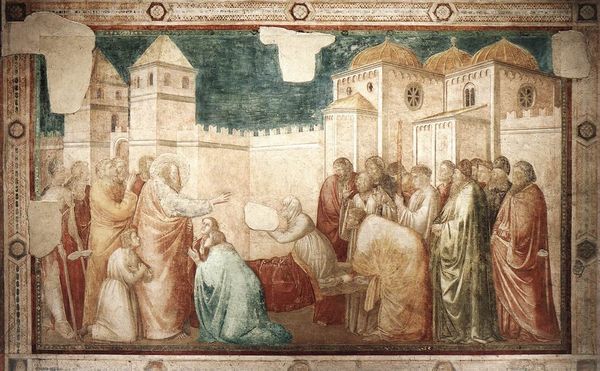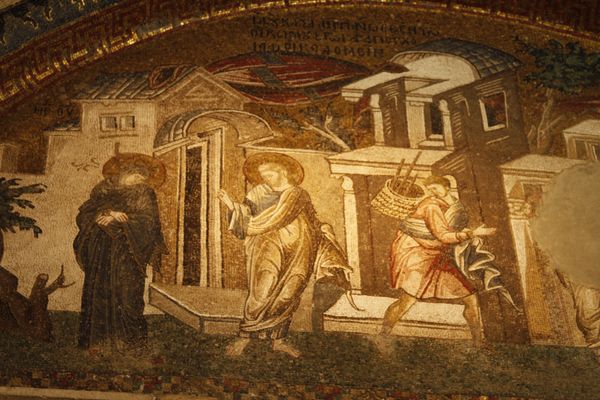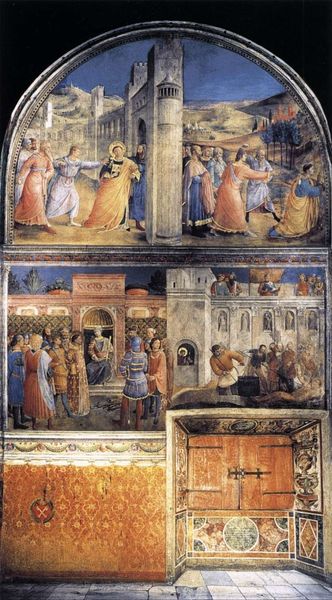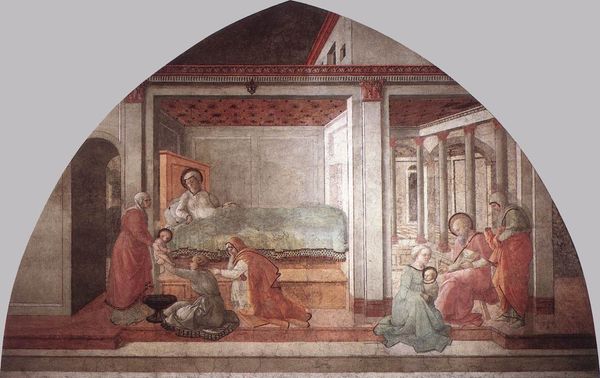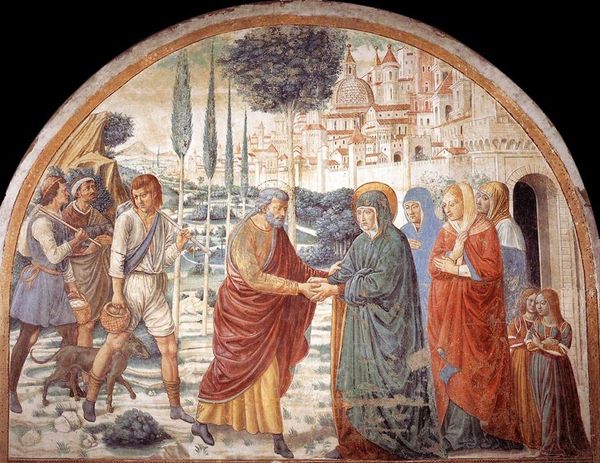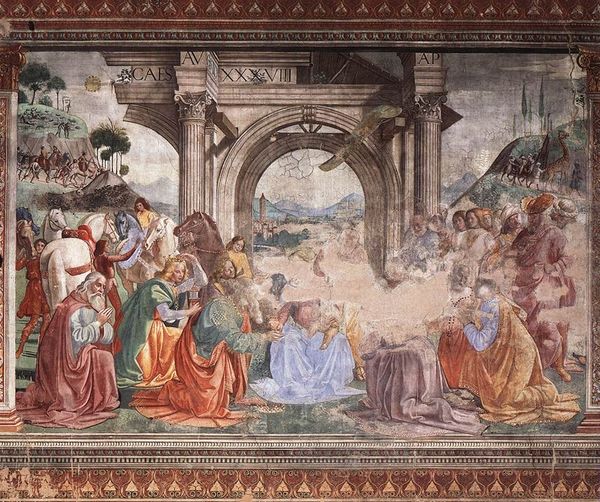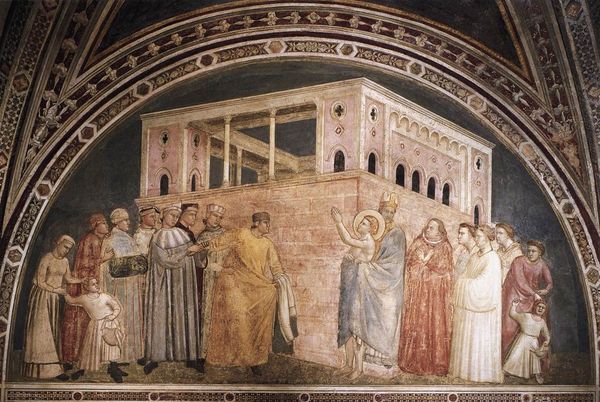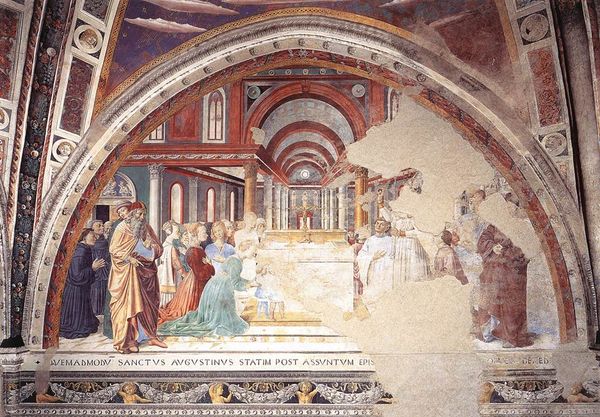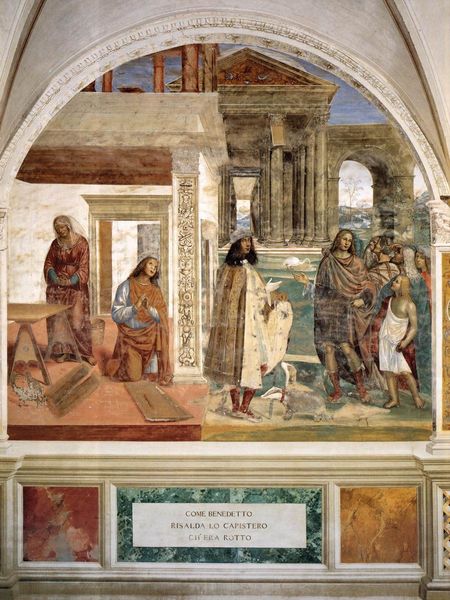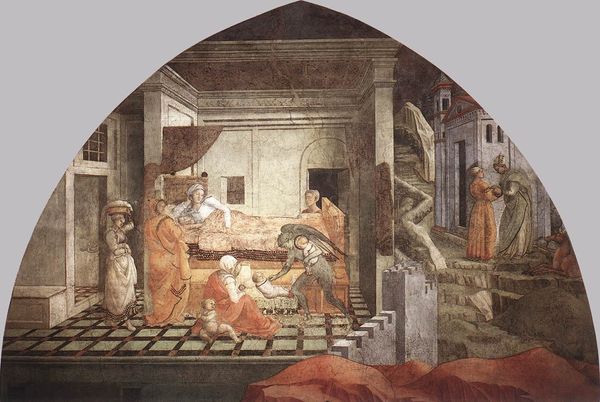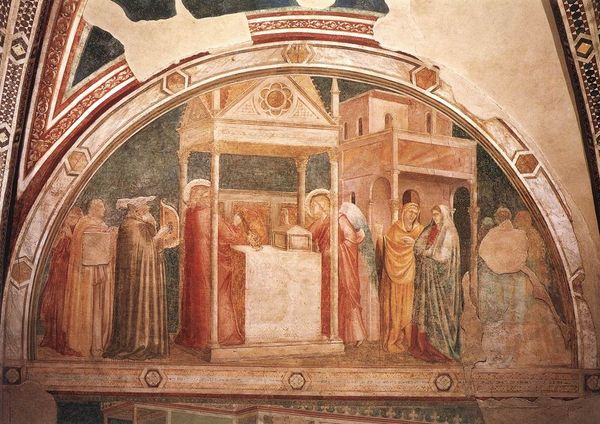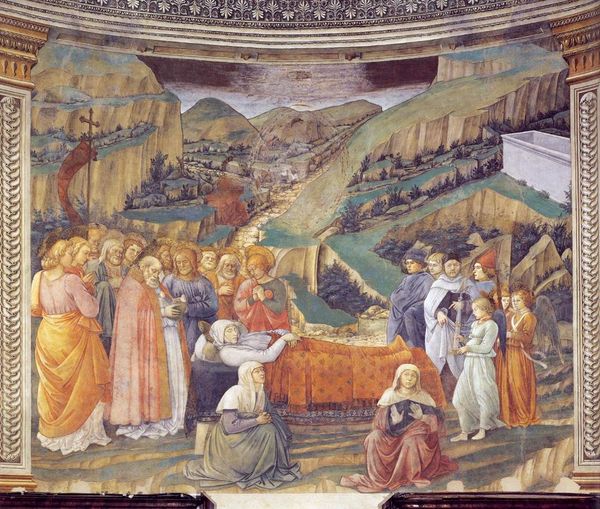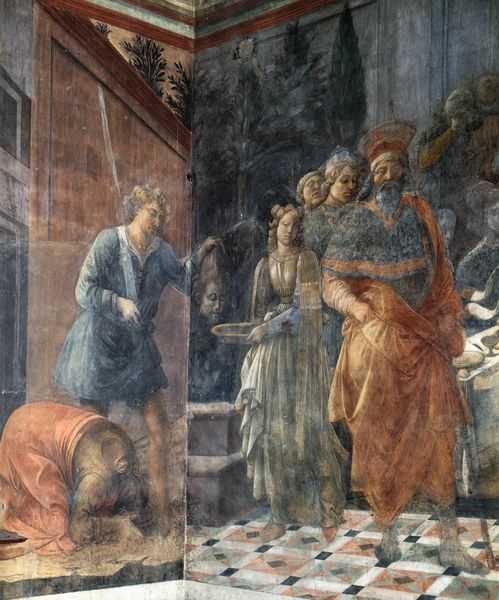
tempera, painting, fresco
#
portrait
#
water colours
#
narrative-art
#
tempera
#
painting
#
landscape
#
fresco
#
oil painting
#
underpainting
#
christianity
#
men
#
genre-painting
#
history-painting
#
italian-renaissance
#
early-renaissance
Copyright: Public domain
Benozzo Gozzoli created “The Vintage and Drunkenness of Noah” using fresco, a technique where pigments are applied to wet plaster. This method, prevalent during the Renaissance, required speed and precision, demanding skilled craftsmanship. Gozzoli’s fresco shows a clear division of labor. In the vineyard, figures climb ladders to harvest grapes, while others collect the yield. On the right, a classical building stands, where Noah is shown inebriated, his state discovered by his sons. The act of fresco-making is a complex layering process, each application of pigment becoming an integral part of the wall itself. In that period, these materials were part of a larger system of production and patronage, with the artist relying on assistants for labor. Fresco, as a medium, was not merely about aesthetics; it was deeply embedded in the social and economic fabric of its time. Paying attention to the materials, method, and context allows for a richer appreciation of the artwork.
Comments
No comments
Be the first to comment and join the conversation on the ultimate creative platform.
